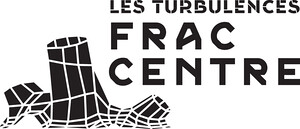A robotic and aleatory method was used in the fabrication of this “prop”: a heap of vitrified plastic created through the use of ambiguous anthropo-technical procedures (self-generating processes) whose main aim is to discover an engendered shape, a sort of shapeless and computational Golem, an artifact of the procedures set into motion.
… Let something happen, let it be made fuzzy by the very logic that drives this process, so as to corrupt the automaticity between 3D fabrication technologies that are usually hostages to their procedures and thus produce an exact replica—for instance, 3D printers. We propose that a robotic-computational operating procedure unfolding in real time serve as the vector of a design that emerges during the construction process itself.
This means working out protocols that enable multiple local negotiations that will gradually reveal a form never designed in advance, one which will emerge from contingencies, their successive and aleatory iterations and reiterations… to produce a structure/territory that has no model other than the discovery and extraction of an underlying formal logic issued from the incestuous co-opulation of algebraic vectors and a bachelor machine, a 7-axis robot.
The movements of this robot are no longer based on determinist parameters. Instead of going from one predefined point to another, they operate in a conditional mode, based on its relative position, going from where it should be to where it will never be, because its trajectory is disrupted by new signals indicating a new orientation, over and over again, orientations intrinsic to its illogical logic, never following a path constituted only by the addition of pointless vectors, stuttering as it stammers.
In short, this fragment will be a series of invaginated, hollow, folded areas, a tool-assisted speedrun heap of PLA plastic that is endlessly recycled and vitrified.
Technologies and materials
This mop of hair is made of two tons of polyester obtained from the plastic recycling industry. This material shrinks when exposed to heat (800 degrees) over a radius of about twenty centimeters and forms a shell.
We use the following technologies:
- Two Kinect scanners in order to track the constantly transforming topology in real time.
- A 6+1 axes KUKA 10100 robot mounted on a lab jack so it can navigate the Z axis (up to five meters high).
- Heat guns mounted on the robot for 3D printing with black ABS plastic.
- Two tons of grade A RPSF (Recycle Polyester Staple Fiber), 15D denier. Length of cut: 64 mm. Color: Black.
- Software / Rhino 3D / Processing / Kuka PRC / Grasshopper / The real time operation is guided by the following: Signals from the topography in formation are captured, computer-processed and relayed to the robot so as to constantly modify the emerging trajectories.
Fabrication stages
- Materials squirted manually.
- Scanning of a shapeless heap of raw material (recycled plastic).
- Extraction onto a digital meshed surface of main points (polygon summits).
- Using a Python script to trace an aleatory trajectory following the distance between the robot and the raw material based on the constant rereading of the level curves.
- Carbonization, shrinking and liquefaction of the polyester surface by motion-tracking robotics, seeking out this form that does not yet exist, like an archeology of the present moment.
- Giving rise to a shapeless shape of the shapeless.
Scan script
This stage involves the determination, on the scan of the emerging surface, of the aleatory trajectory of the moving robot. The Kinect (scan) produces clouds of points that enable navigation via translation vectors. Each scan gives a new reading of the robot’s position and the work it has done so far, thus redefining new trajectories that are incremental (successive stages) and recursive (the memory of preceding stages).
This system organizes probabilistic orientations along random but guided paths generated by the robot’s movement vectors, assigning the points, orientations and zones of attraction and repulsion, so-called magnetic attributes that will guide the trajectories through approximations and positioning conditionals… like a suite of possibilities… that are simultaneously organic and computational.


